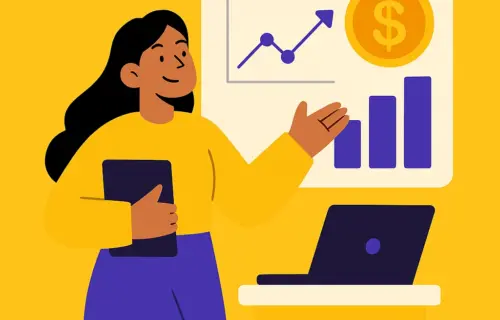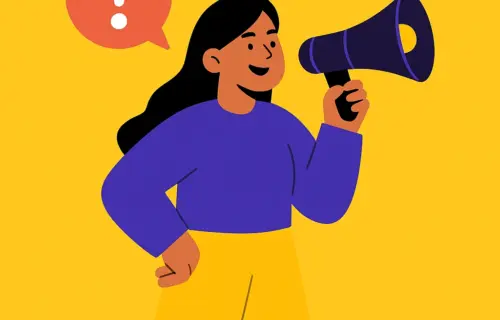Summary
- Empower your events: Choose the right voice for your educators by understanding exactly what your audience craves. Whether it’s soft skills for the newbies or tech prowess for the veterans, tailor your speaker choices to match.
- Craft content that connects: Ensure your speakers are not just knowledgeable, but also engaging. With our guide, learn to evaluate speaker proposals for their relevance, delivery, and how well they resonate with your event’s theme.
- Avoid common pitfalls: Sidestep the usual blunders in speaker management with our pro tips. Ensure clarity, alignment, and uniqueness in every proposal to make your event stand out.
- Seal the deal with ease: Navigate the final steps of speaker selection with our expert advice on engagement, negotiation, and seamless communication. Make every detail count to elevate your event experience.
- Streamline Your Speaker Selection: Say goodbye to the headache of manual speaker submissions with our cutting-edge call-for-speakers tool. Fast-track your path to a vibrant speaker lineup in just three simple steps!
Intro
Table of contents
- 1 Intro
- 2 The right speaker submissions come from understanding your audience’s needs
- 3 Establishing evaluation criteria for speaker submissions
- 4 Reviewing and assessing event speakers
- 5 Finalizing selection and communicating with event speakers
- 6 Streamline with our new speaker submissions tool!
- 7 The takeaways
The best idea in the world means nothing if it isn’t executed correctly. Just like amazing session ideas aren’t that useful for your educators if you choose the wrong event speakers.
It’s tough. The process of going through speaker submissions can be a headache. But we have two solutions you can put into practice today.
- Follow the steps below to do it yourself
- Join the waiting list for our new call-for-speakers tool
Either way, the power to deliver relevant and engaging event speakers for your educators is below. Choose your path and power up your events now!
The right speaker submissions come from understanding your audience’s needs
Understanding the needs and preferences of your audience is not just beneficial. It’s essential. The success of your education events depends on it.
Here’s how you can ensure your speaker submissions align with your audience’s expectations:
- Identify Your Audience: Begin by defining who your audience is. This includes K-12 students, teachers, and possibly industry professionals or parents. Knowing the demographic details can help tailor the content.
- For example, if you are catering training for young teachers, perhaps they want to hone their soft skills. On the other hand, perhaps your more seasoned educators want to become more tech-savvy.
- Engage and Evaluate: Use community-level approaches like research studies, reports, and demographic data to gain insights into the audience’s needs. Additionally, consider individual/group-level methods such as surveys, interviews, and focus groups to gather more specific feedback.
- P.S. Make this process as painless as possible by avoiding these attendee feedback mistakes!
- Match Content with Needs: Once you understand your audience, make sure speaker submissions address the topics your audience wants to see. Matching the two ensures a more engaging and relevant experience for attendees.
- Here is our guide to the hottest professional development topics for 2024. These are session ideas that educators are craving.
Establishing evaluation criteria for speaker submissions
Making sure the speaker is covering the right topics is one thing. You need to be sure they’re going to deliver it correctly. A good idea carried out wrong isn’t worth much at the end of the day.
Here’s a structured way to assess submissions effectively:
- Speaker submissions profile evaluation:
- Credentials and experience: Assess professional qualifications, speaking experience, and presentation skills.
- Speaking style and delivery: Observe speaking skills, delivery, audience engagement, and overall performance.
- Cultural and event fit: Determine alignment with the event’s tone, audience needs, and fee structure.
- Content quality analysis:
- Relevance and timeliness: Ensure content is high-level, credible, relevant, and innovative.
- Alignment with industry challenges: Content should address current industry challenges and opportunities.
- Learning formats: Employ a variety of adult learning delivery formats suitable for multiple experience levels.
- Engagement and interaction:
- Methods of engagement: Analyze the speaker submissions approach to presentation and audience interaction techniques.
- Practical application: Review practical, real-world applications and the ability to introduce new ideas and methods.
For even more hot advice, read our guide on how to launch a call for speakers at your next event!
Reviewing and assessing event speakers
Reviewing and assessing speaker submissions for K-12 events requires a structured and meticulous approach. Here are key steps to ensure the selection of the best event speakers:
- Crafting compelling content: Ensure each proposal includes a captivating title, a detailed description, and a clear outline. Make sure it ties back to the event’s overarching theme.
- External review and feedback: Encourage speakers to draft their proposals outside the submission form. This allows for thorough revisions and the incorporation of feedback. This will enhance the final product for your attendees.
- COMMON MISTAKES – What to avoid when managing event speakers
- Detail and clarity in proposals: Proposals should provide comprehensive details about the session idea. It should offer a sneak peek into the session’s value to your educators. Clear, descriptive titles are preferred over vague or “cute” ones. This makes it easier for reviewers to understand the focus of the session.
- Alignment with event goals: Each submission must add to the event’s focus. Even niche topics should be presented in a way that appeals to the audience as a whole. This alignment increases the likelihood of the proposal’s acceptance.
- DO IT BETTER – Learn how to set the right goals for an event
- Unique perspectives and session types: Speaker submissions should highlight the speaker’s unique take on the topic. This will make it stand out from other proposals. Plus, the format should be clear. It should match the desired session type (e.g., workshops, keynotes), aligning with the event’s format and goals.
Finalizing selection and communicating with event speakers
Finalizing the selection of speaker submissions and establishing clear communication channels are pivotal steps to ensure the success of K-12 events. Here’s a streamlined approach:
- Early engagement and booking:
- Start the booking process 4-6 months in advance to secure speaker availability.
- Negotiation and budgeting:
- Discuss content, and style, and negotiate fees while considering your budget for speaker fees, travel, expenses, and accommodation.
- Offer compensation – if applicable – aligning with the speaker’s needs and your event’s budget.
- LEARN MORE – The ultimate guide to organizing education events with ease.
- Communication and coordination:
- Maintain ongoing communication to understand technical and logistical needs.
- Provide speakers with all necessary details including session duration, room access, and promotional strategies.
- Schedule practice sessions and discuss engagement strategies like live polls or Q&A sessions for enhanced interaction.
- AVOID CHAOS – the consequences of poor communication systems.
Streamline with our new speaker submissions tool!

You can skip the rest of this article and streamline your speaker submission process. Try our new call-for-speakers feature.
- Why is this exciting? Because sifting through hundreds of speaker applications manually is bogging down your event planning.
- Now, you can craft a distinctive and professional call-for-speakers page in just three steps.
- Our system will evaluate and shortlist the top candidates for you, leaving you to simply choose the best of the best.
- In essence, this means more captivating speakers for your audience and a more streamlined organizing process for you!
HOWEVER, This feature is bound to be in high demand,
so be sure to sign up for the waiting list to ensure you don’t miss out!
And if you find cutting-edge event planning tools intriguing. We have even more feature updates for you to enjoy!
How to Create an Event Schedule that Will WOW Your Attendees from Sched Support on Vimeo
The takeaways
- Embrace technology for efficiency: Utilize innovative tools like call-for-speakers platforms to streamline the speaker submission process, making it quicker and more efficient to identify top candidates.
- Understand your audience: Deeply understanding the needs, preferences, and expectations of your K-12 event attendees is crucial. Tailor speaker selections to match these insights, ensuring content relevance and engagement.
- Evaluate content and delivery: Assess speaker proposals not just on the relevance of their content, but also on their ability to deliver it in an engaging, clear, and impactful manner. Look for a balance of expertise, presentation skills, and audience connection.
- Avoid common mistakes: Ensure proposals are detailed, aligned with event goals, and offer unique perspectives. Vague or misaligned submissions can detract from the event’s value.
- Communicate effectively: Establish clear, ongoing communication with selected speakers. Discuss expectations, logistical details, and engagement strategies well in advance to ensure a seamless and interactive event experience.
- Plan ahead: Begin the speaker engagement and booking process early to secure the best talent and allow ample time for planning and coordination.
- Focus on engagement: Look for speakers who employ interactive elements and practical applications in their sessions to foster a dynamic learning environment.
The best possible event speakers mean more effective professional development, which means greater student success.
But remember, speaker submissions are just one of many tasks when planning K-12 events. Try sched for free to streamline the rest of the process!








